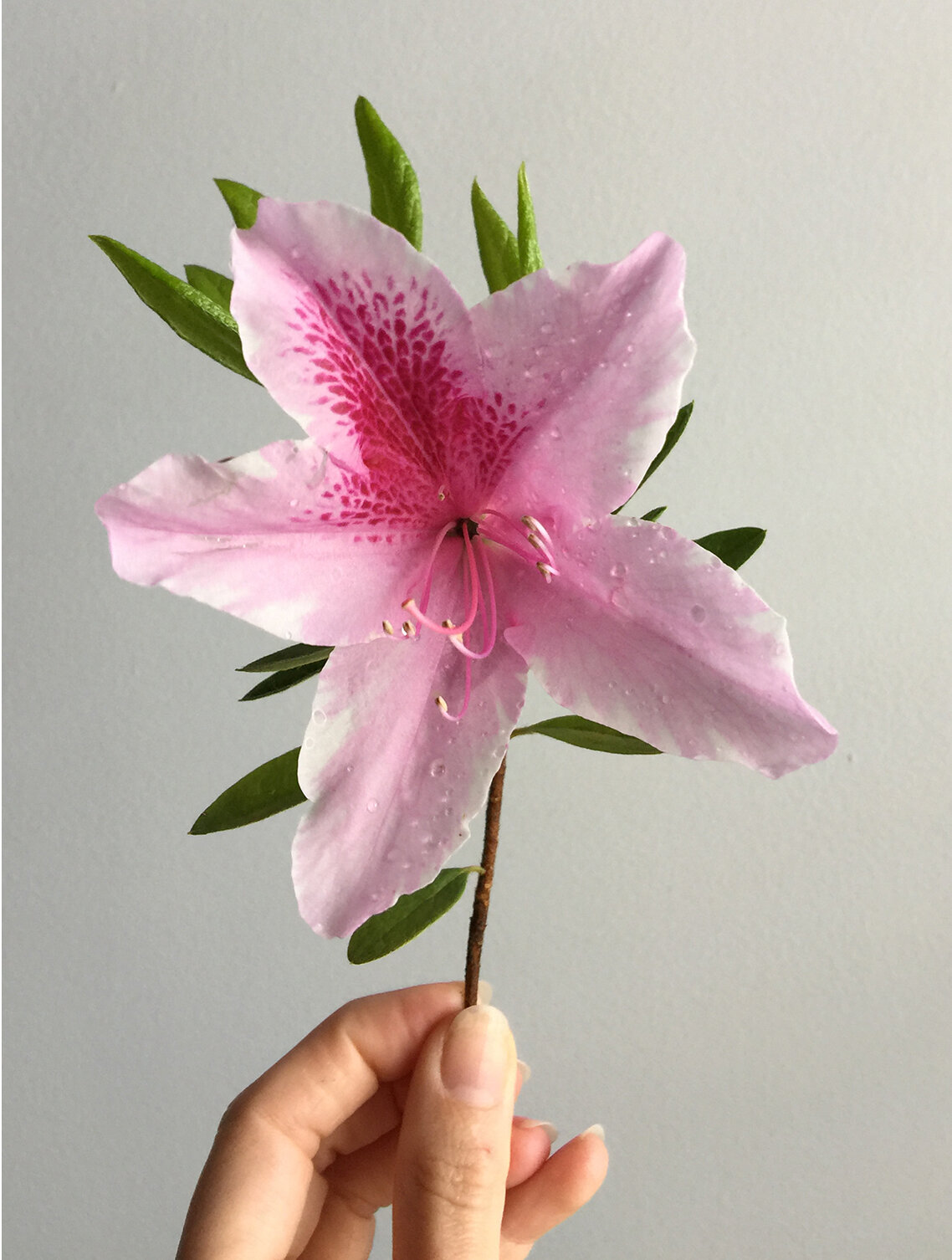The Gardener's Friend — On Rhododendron x 'George Lindley Taber’
You are a recipient of Coucou Postale, a postcard series designed to engage and delight readers through stories and art using good old fashioned mail and the magic of the Internet.
Rhododendron x 'George Lindley Taber’ — LaGrange, Georgia, 2016
“A victory! To leave your loneliness panting behind you on some street corner while you float free into a cloud of sudden azaleas, pink petals that have never felt loneliness, no matter how slowly they fell." —From The Rider by Naomi Shihab Nye
In Japan some springs ago, I was lucky enough to live for a short time next to a neighborhood rose garden, and even luckier that every single variety was in bloom. I lost hours wandering shrub to shrub, committing each intoxicating scent to memory, until I exhausted my schnoz. So drunk on heaven's scent, I paid little mind to the markers highlighting the roses’ names, both common and Latin. Who could remember all that info anyway?
On my way back to my accommodation, I passed another shrub that appeared to have been dressed in a swath of vibrant pink azaleas. What variety was it, I wondered? Where were those markers now? Today, there are a handful of apps people can use to identify plants. None seem to be as effective as just learning them the old fashioned way — word-of-mouth.
I never figured out the name of that Japanese azalea, but it did remind me of an azalea variety that grew outside my bedroom window as a kid: the George Lindley Taber. I didn’t know its name until I saw it again at my best friend’s house in LaGrange, Georgia, hundreds of miles away from my childhood home.
“It’s a Taber,” her husband told me as recalling an old friend. What was a “Taber”?
If you ever received an orange in your Christmas stocking as a kid, you have people like Taber to thank for the tradition. George Lindley Taber was an American horticulturist who relocated to Florida in the late-1800s to cash in on the agriculture boon happening in the newly-minted state. After co-founding Glen St. Mary Nursery, he focused on developing cold-resistant citrus in the aftermath of the “Great Freeze”, a cold snap that decimated the state’s orange grove industry. He triumphed.
Once he saved the citrus groves, he focused on other varieties of plants. Today, the company continues to thrive despite an onslaught of catastrophic events, including the freezes of 1894 and 1895, numerous hurricanes and two plagues — yellow fever in 1888 and the citrus canker in 1913. Drama aside, to me, Glen St. Mary’s’ most remarkable contribution is the azalea species named for its founder, a plant, in fact, he never saw.
A key point to know about naming plants is that you can’t name them after yourself. His azalea, also referred to as the “Orchid Azaelea” because it remarkably resembles one with its ombre shimmer and leopard spots, came into existence by happenstance: a keen-eyed production assistant who saw an intriguing lone branch on an existing cultivar and decided to propagate it. Several years passed, and in 1929, the company launched the plant to the world. They gave it the name we know it by today, a posthumous honor that seems to resurrect Mr. Taber in gardens across the American southeast every spring.
Naming plants, as it turns out, does the job a pharaoh named Unas did nearly 4,400 years ago when artisans endlessly carved his name into the walls of his tomb. Unas was everywhere. Not to mention, every person who has entered his tomb since repeats his name upon seeing it, thus conjuring his spirit across time and space over and over again.
In the same way, when we speak the names of plants, we’re doing the same people they're named for, calling forth the person whose name they symbolize for all time. Or at least until people stop memorizing them.

